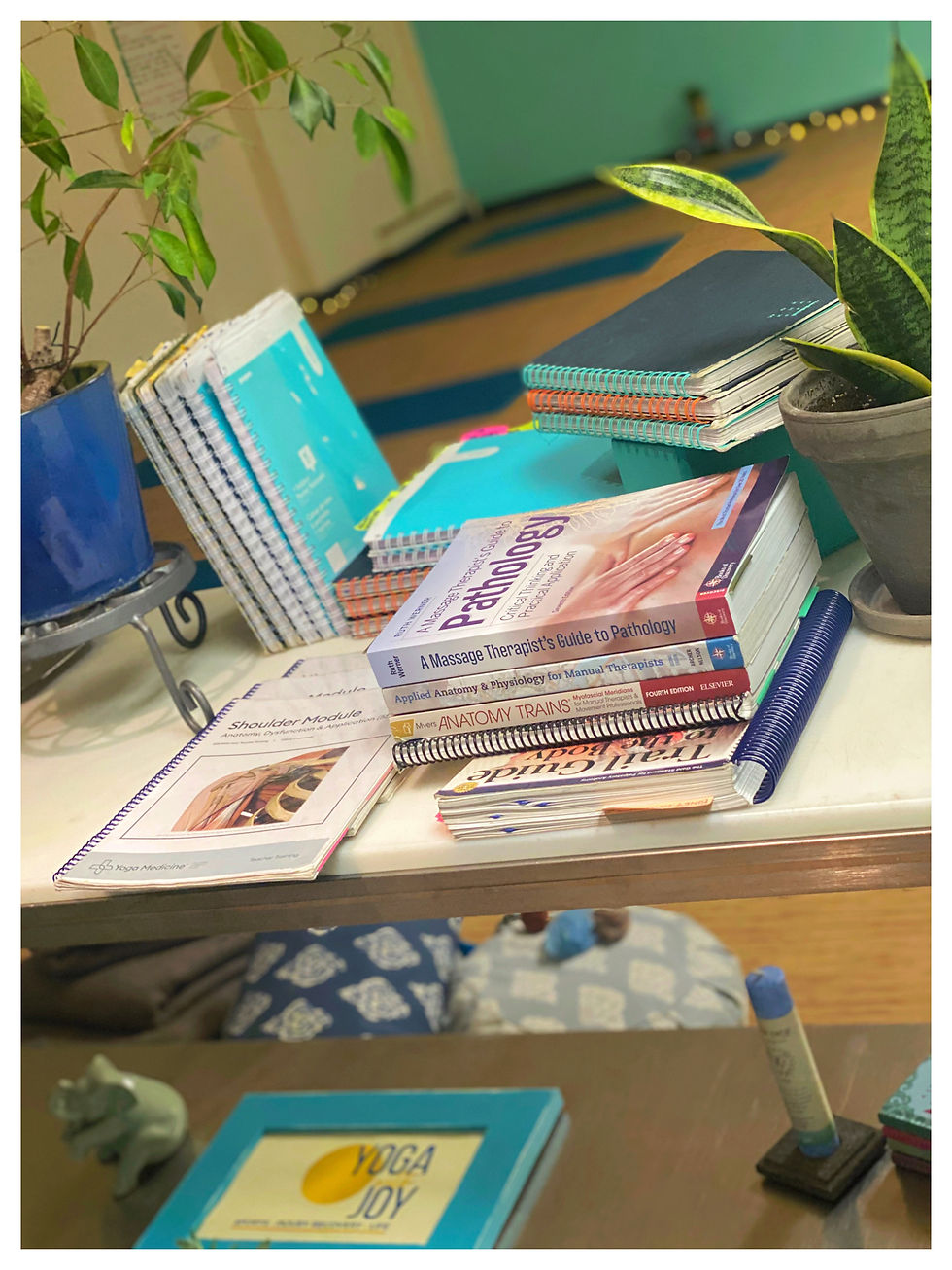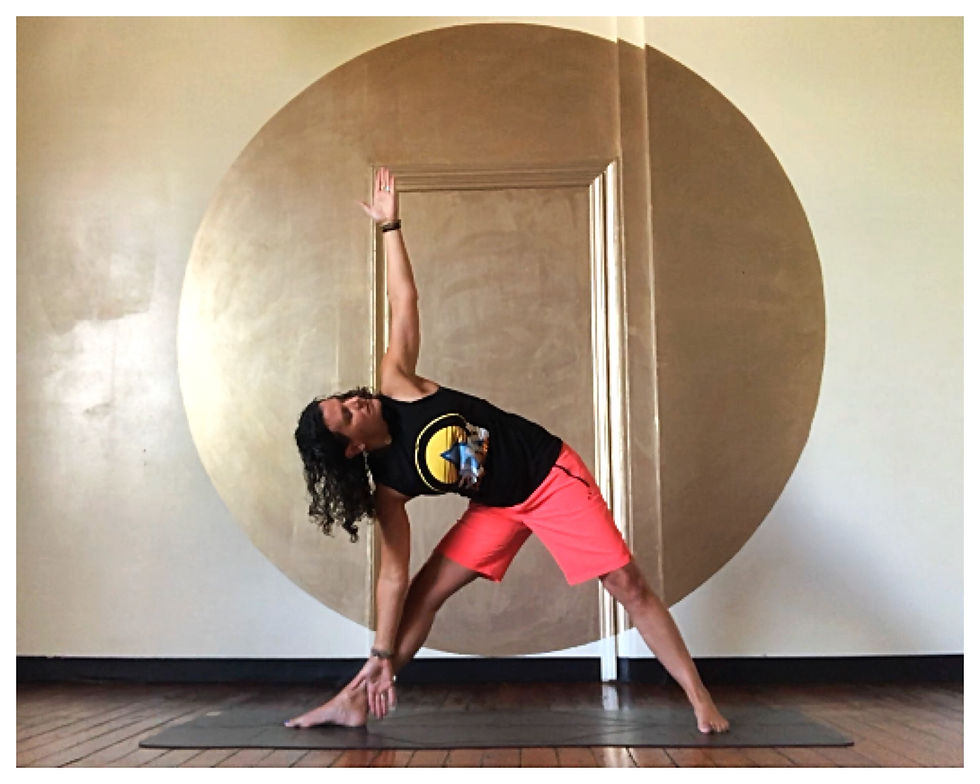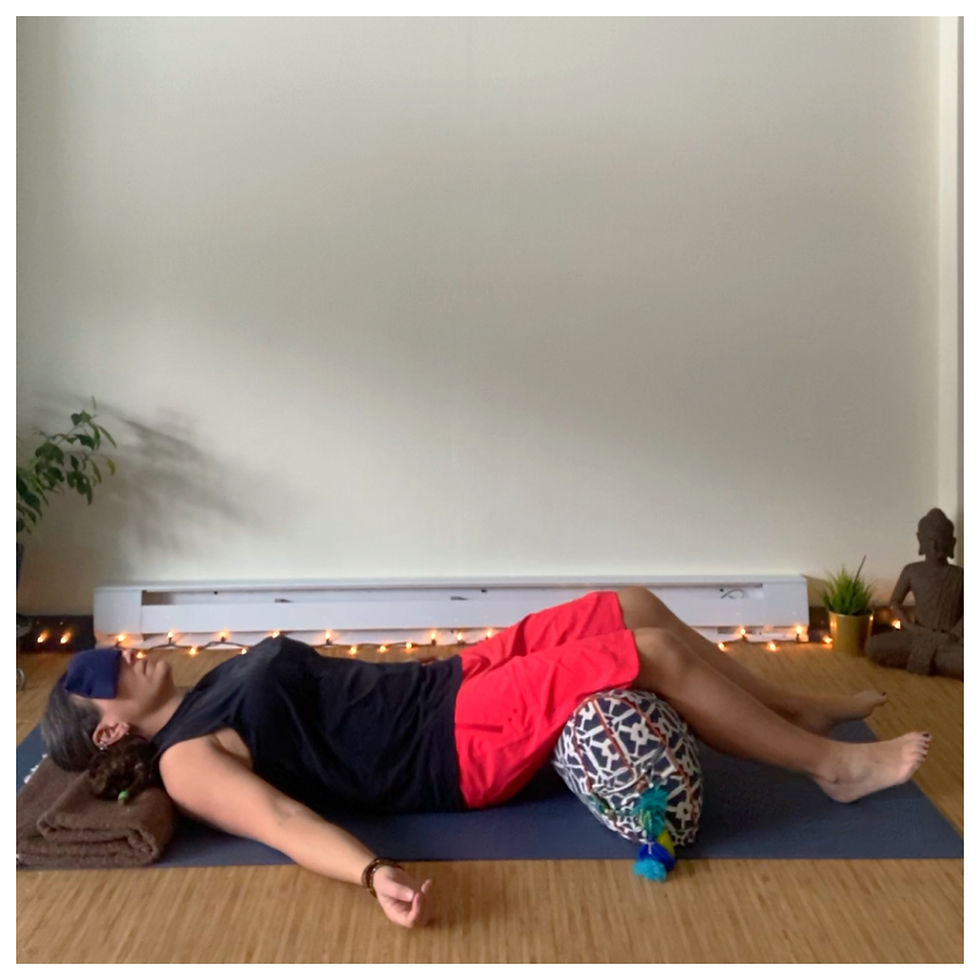Yoga's discomfort zone and what it means to step into it.
- Joy Zazzera

- Dec 14, 2022
- 5 min read
Updated: Dec 15, 2022
I am a firm believer that we are the #1 factor in how we feel about ourselves. That, input, yields output. That the things we train our body to do, become easy for our body to do. And that what we do - “with”, “for” and “to” - our bodies most regularly, will incrementally influence how we feel over time. Not only do we have the incredible capacity to self-regulate how we generally feel, we also have the ability to self-regulate what we think, how we breathe and how we move. Therefore, the routines we retreat to in time of elevated stress, overwhelm and even crisis, should, for our own benefit, be the same ones we retreat to in order to find our way back through, to mend ourselves. If feeling good, and having capacity for stamina, resilience and good health is our goal, then practicing healthy routines is paramount. We need healthy routines in order to self-initiate a balanced atmosphere and function within our body. When we don't set consistent times in life for personal growth and for rejuvenating our body and our mind, when we omit space for redistributing balance between our excesses and our deficiencies, then we shouldn't expect to have mental and physical resilience during difficult and challenging moments that necessitate stamina and calm.
The way I see things is that we can either shoot for sameness and stagnicity by aiming at what’s most recognizable and probably most easily in our target range, over and over again - because we know it makes us feel a certain way - or; we can shoot into something less familiar and at first, less instantly-gratifying, but with a greater potential for long-term success. Success in this instance, defined relative to stamina, longevity and resilience of inner health and well-being. If we want to see a positive difference in anything, first we have to initiate a difference: we have to first begin by initiating a shift in mindset. We have to decide to abrupt our usual pattern of thinking with something less certain.

For example, if your reaction to trying yoga for the first time elicits a mindset that you don’t have an able-body for yoga, or that you either ‘can’t balance’ or ‘are bad at balancing’, you’ve probably gotten very good at sticking to your comfort zones. Comfort zones though, don’t usually enable us to lean into personal growth & development and conscious retainment of one's physical and mental capacities. No, those skills rarely appear in our tool-box without a conscious and deliberate choice to own up to the fact that: WE are the #1 factor in how WE feel about ourselves, AND having follow-through or even the radical audacity to do something about it: to gain those particular skills. To step out of the comfort of being ok with the way things are.

My own awareness from practicing yoga now for well over two decades, and an on-going five year period of intensive human anatomy and physiology studentship. Through two complementary yet unique therapeutic lenses - yoga and massage - I (am humbly just beginning to) understand how to help other adults tap into their body as it senses and adapts to their surroundings and I have acquired, as a result of up-leveled focus, advanced knowledge to direct another person's nervous system to down-regulate. I deliberately continue to advance my scientific understanding in order to be a great first resource - but not to have all the answers - to those students who desire to learn from me of those I’m trained best to help. I'm most excited to teach adults these skills in a way they can gain confidence to begin to practice self-applying said newly acquired skills as routine, necessary and intentional inputs for a healthy well-being.
My yoga classes offer problem-solving approaches backed by purpose and science, for movement, mindfulness and relaxation for both non-athletic minded and athletic-minded adults. I present students who take my classes with lots of varied challenges as movement, mindful and relaxation inputs; they then are responsible to deliver these same inputs to their body and mind as they more confidently practice the skills of yoga through self-led routine, when taking teacher-led classes isn't possible.

Improving muscle and core strength and ability to refine one’s center of gravity; testing memory and cognitive ability to listen, follow and respond to cues; inviting heightened focus into the tasks at hand on the yoga mat as mechanisms to improve cognition; gaining confidence in basic meditation and breathing to positively effect sleep; and equipping capacity to self-nudge tension downward; and student-understanding; are ALL underlying principles that inform the yoga I teach.
Through years of my own education, and living in a body with unique challenges, I am able to equip students with new autonomy to become more efficient in their body and mind in all that they do. My yoga classes - where we consciously practice these mindful inputs - are taught in short series and offer students the opportunity to acquire these “trainable skills” as a self-motivating means to change one’s personal circumstances. To change how they think, feel and move. To effect, in a heightened capacity, their ability to relate to their body and mind and be more economical with their inner-resources.

As a well-trained yoga and movement professional, with over two decades of experience as a student of yoga, I personally choose dealing and overcoming mid-life physical challenges brought about from over-use, lack of recovery and lack of awareness, by placing emphasis on my education and continued buy-in to the exploration in practicing yoga for the betterment of myself.
I am happy to help those new to yoga the chance to step out of their comfort zone, and into some unfamiliarity and curiosity in order to do the same.
When you step out of your comfort zone, and it works, there is nothing more satisfying. If you don't ever go out of your comfort zone and face your fears, the number of situations that make you uncomfortable keep growing. One way out is through, just as one way, and in this case often the most reliable way, to know if you are able-bodied for yoga, is to take a short series of classes with the same teacher and feel and know for yourself.
My ultra-informative sustainably designed, and therapeutically-guided flow short 5 class series begin their newest round on Jan. 3.
When we do decide to earmark our earned income as a self-investment, finding someone who can maximize those investment dollars into future-self currency with minimal to no risk is the number one draw I myself look for in a healthcare professionals, wellness providers including massage therapists and yoga teachers.
Check out my two distinct Series offerings here to discern if one of my choices suits your present day needs and those for your future self.







Comments